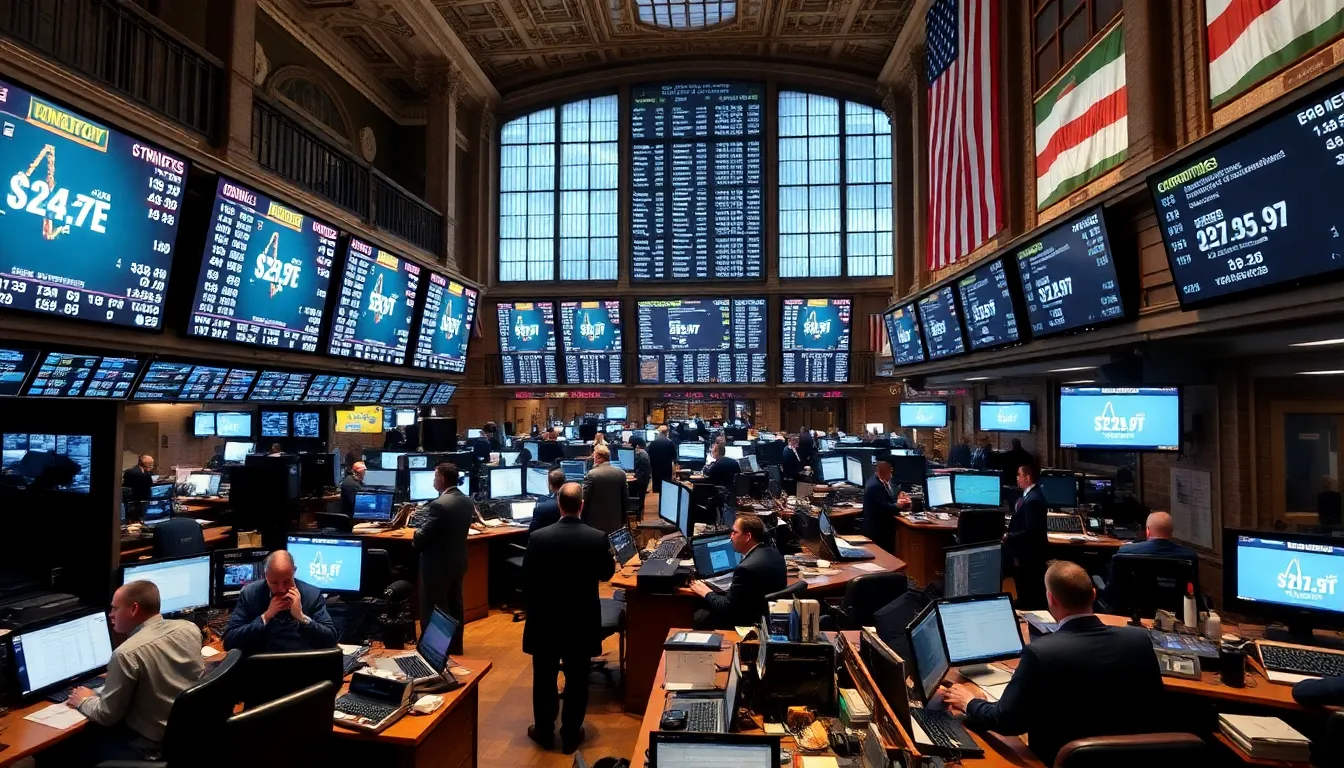When the sun rises, so do the markets, but what time does that actually happen? For anyone looking to dive into the world of trading, knowing when the markets open is like knowing when the coffee shop starts brewing your favorite cup. It’s essential! Timing can make or break a deal, and missing that golden hour might leave traders feeling like they just missed the bus—again.
Table of Contents
ToggleUnderstanding Market Hours
Understanding the hours when markets operate is essential for traders. Market opening times across the globe influence trading strategies and decision-making processes.
Overview of Global Markets
Global markets consist of various exchanges that operate in different time zones. Key exchanges include the New York Stock Exchange, which opens at 9:30 AM EST, and the London Stock Exchange, opening at 8:00 AM GMT. Other significant markets like the Tokyo Stock Exchange start trading at 9:00 AM JST. Knowing these times helps traders capitalize on global opportunities. Market overlaps often lead to increased trading volume and volatility, making these periods particularly advantageous for investors.
Importance of Knowing Market Open Times
Grasping market open times allows traders to align their strategies with the most active trading periods. Missing the opening can result in lost opportunities and unfavorable price movements. A trader who closely monitors these times can react promptly to news and events that impact market conditions. An understanding of market hours ensures proper planning and execution of trades. Additionally, traders can avoid potential slippage and maximize their gains during peak hours. A trader’s awareness of these openings is critical for successful trading and investment strategies.
Major Stock Exchanges

Stock exchanges play a crucial role in global financial markets. Their opening times significantly impact trading strategies.
New York Stock Exchange (NYSE)
The New York Stock Exchange opens at 9:30 AM EST. This exchange is one of the oldest and largest globally, attracting high volumes of trades every day. Major companies like Apple and Goldman Sachs are listed on the NYSE. Active trading hours last until 4:00 PM EST. Traders often seek to execute orders during the first hour, as volatility tends to be higher. Overlapping hours with international markets increase liquidity, making this period particularly appealing for traders.
NASDAQ
NASDAQ also opens at 9:30 AM EST, running until 4:00 PM EST. Unlike the NYSE, it focuses heavily on technology and growth-oriented companies. Prominent names such as Microsoft and Amazon trade here. Its electronic trading platform enhances efficiency and speed of transactions. Traders favor NASDAQ during market overlaps as well, capitalizing on rapid price movements. Its more active trading dynamics attract a different set of strategies.
London Stock Exchange (LSE)
The London Stock Exchange opens at 8:00 AM GMT and remains open until 4:30 PM GMT. It serves as a primary trading venue for investors in Europe. Many significant international companies, like BP and HSBC, operate on the LSE. Market overlaps occur with both the NYSE and NASDAQ, which can lead to increased trading opportunities. This exchange’s hours are vital for traders focusing on European and global equities. Understanding LSE trading times helps in devising effective strategies.
Market Opening Times Across Different Regions
Understanding market opening times is essential for traders worldwide. Each region operates on distinct schedules, impacting trading strategies.
North America
The New York Stock Exchange (NYSE) opens at 9:30 AM EST and closes at 4:00 PM EST. Simultaneously, NASDAQ operates with the same hours, focusing on tech and growth-oriented companies. These opening times see significant trading activity as investors respond to overnight developments. A surge in volatility often occurs during the first hour, making it a prime time for executing trades. Watching these markets closely provides traders with opportunities to capitalize on market movements and trends.
Europe
European trading begins with the London Stock Exchange (LSE), which opens at 8:00 AM GMT and closes at 4:30 PM GMT. Many key international companies list their shares on this exchange, making it crucial for European investors. Following the LSE, other exchanges across the continent, such as Euronext, open and close around similar hours. During these hours, market overlaps with North America frequently lead to increased trading volume. Engaging during peak times can yield substantial opportunities for traders.
Asia-Pacific
The Tokyo Stock Exchange (TSE) is a focal point in Asia, opening at 9:00 AM JST and closing at 3:00 PM JST, with a lunchtime pause from 11:30 AM to 12:30 PM. This market plays a pivotal role in influencing overall trading trends in the Asia-Pacific region. Other major exchanges, such as the Hong Kong Stock Exchange, operate within similar time frames. Traders often monitor these markets for their early morning signals, which can dictate movements in global markets. Market overlaps with Europe provide additional trading opportunities, enhancing potential returns.
Factors That Affect Market Open Times
Various elements influence when markets open, impacting trading strategies and the timing of transactions. Two significant factors include daylight saving time adjustments and economic events.
Daylight Saving Time
Daylight saving time (DST) affects market open times across different regions. Regions that observe DST shift their clocks forward by one hour, altering the typical trading hours. For instance, when DST begins, the New York Stock Exchange (NYSE) and NASDAQ adjust from 9:30 AM to 4:00 PM EST, reflecting this one-hour change. Conversely, markets in areas that do not observe DST do not experience this adjustment, causing potential discrepancies in trading sessions. Traders must remain aware of these shifts to align their activities with global market hours effectively.
Economic Events and Announcements
Economic events and announcements play a critical role in determining market opening dynamics. Scheduled reports, such as employment figures or central bank meetings, can impact investor sentiment. Traders often anticipate heightened volatility following significant announcements, leading to increased activity right at market open. Pre-market trading often reflects this expectation, creating opportunities for traders prepared for potential price fluctuations. By understanding these events, traders can position themselves effectively to profit from rapid market movements.
Tips for Investors
Understanding the best trading times maximizes efficiency and opportunities. The most active trading occurs during the first and last hours of market openings. Many traders focus on the initial hour, where volatility tends to be higher. Overlaps between major markets, such as the NYSE and LSE, also generate increased trading volume. Engaging during these hours can lead to significant gains.
Best Times to Trade
Experts recommend trading during peak hours when market activity is highest. For example, the first hour after the NYSE opens at 9:30 AM EST often sees substantial volume. Many traders confirm that trading between 9:30 AM and 10:30 AM EST yields better results. The final hour of trading from 3 PM to 4 PM EST typically captures a surge in transactions, thus presenting further opportunities. Traders benefit significantly from understanding these timeframes to enhance their strategies.
Tools for Tracking Market Hours
Effective tools help traders stay informed about market hours. One popular option includes financial news websites that provide real-time updates on global markets. Many investors utilize mobile apps designed to track market schedules with notifications. Platforms like TradingView offer integrated calendars for market openings and closings. Traders find that using these technological resources streamlines their efforts to align strategies with active trading periods.
Understanding market opening times is vital for traders seeking to maximize their opportunities. By aligning their strategies with peak trading hours, they can enhance their chances of success. The insights gained from knowing when major exchanges operate allow traders to navigate the complexities of the market more effectively.
Staying updated on factors like daylight saving time and economic events further empowers traders to make informed decisions. Ultimately, being aware of market dynamics and timing can lead to more strategic trading and improved investment outcomes.



